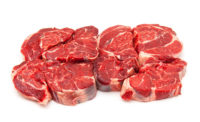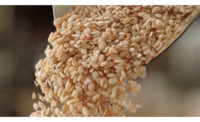The presence of Salmonella in beef products and development of methods to prevent that presence have been focal points for all sectors of the beef industry in recent years.
Recent reports from the Centers for Disease Control and Prevention (CDC) estimate 1.2 million cases of salmonellosis occur annually in the United States, of which approximately 42,000 are laboratory-confirmed. In a recent interagency food-safety report, outbreak surveillance data were used to categorize attribution estimates by food source. Of 17 attribution categories, 77 percent of model-estimated illnesses were attributed to: seeded vegetables (18 percent), eggs (12 percent), fruits (12 percent), chicken (10 percent), sprouts (8 percent), beef (9 percent) and pork (8 percent). Specifically, 47 outbreaks and 1,473 illnesses caused by Salmonellawere attributed to beef products.
National baseline data show a continued decrease in the incidence of foodborne E. coli O157:H7 related illnesses over time, but that same level of success has yet to be achieved with Salmonella infections. Some people have questioned why the beef industry does not apply the same strategies or “lessons learned” for reducing E. coli O157:H7 to reduce Salmonella. It isn’t that simple.
Since the 1992 outbreak of E. coli O157:H7, the beef industry has developed and applied multiple antimicrobial intervention strategies to reduce E. coli O157:H7 on beef. These intervention sprays and other technologies are highly effective in reducing microbiological contamination on carcass surfaces, and research has shown that many of these surface decontaminates are also effective in reducing Salmonella.
We know E. coli is typically considered a fecal contaminate; therefore, carcass surfaces may be exposed to contamination during slaughter and dressing. Salmonellasurface contamination may also occur during slaughter and dressing; however, research has proven that Salmonella may be internalized in the lymph nodes, which are imbedded in the fat between muscles. Unfortunately, typical carcass intervention sprays are not capable of reaching these areas and will not be effective in reducing Salmonella contamination in lymphatic tissues.
Although the widespread nature of the lymphatic system prevents the removal of all lymph nodes from being a realistic option, several of the larger lymph nodes are removed during normal fabrication practices. The more we can learn about the relationship between Salmonella and the lymphatic system, the better opportunity we have to develop effective control strategies.
In order to further understand this issue, some researchers have focused their efforts on understanding when and how cattle are exposed to the microorganism. Texas A&M University researchers have shown varying levels of Salmonellaprevalence in lymph nodes obtained from carcasses sourced back to feedlots within a single geographic region, which causes one to wonder if something might be occurring within the feedlot setting that could positively or negatively impact Salmonell aprevalence in cattle.
Researchers at Texas Tech University and USDA’s Agricultural Research Service (ARS) recently presented data indicating that calves may be exposed to Salmonella in utero, sequestering the microorganism in their lymph nodes prior to birth. This would mean that calves arrive at the feedlot already carrying the microorganism, which certainly poses a challenge.
Additionally, ARS researchers have published data displaying the potential role flies may play in contributing to Salmonella-positive lymph nodes via transdermal infection. Oral Salmonella challenges also have been investigated, but results were less consistent than those from transdermal challenges.
Some pharmaceutical companies are exploring options for vaccinating cattle prior to harvest in an effort of reducing Salmonella. Researchers have also investigated the types of Salmonella typically found in bovine lymph nodes, and of the serotypes characterized, only some are associated with foodborne illness.
Although we are increasing our knowledge in this area, there are many questions and unknowns remaining. Researchers still have a number of strides to make before effective pre-harvest controls can be offered and successfully used to control Salmonella. Despite the unknowns, this is a key issue on the beef industry’s radar and methods for better control are actively being pursued.
It is important to note that a truly effective approach to reducing salmonellosis will require a comprehensive farm-to-fork approach. All sectors — cattle producers, harvest operators, further processors, retailers, foodservice managers and consumers — have a responsibility and a role in this effort.
As we know from our lessons learned with E. coliO157:H7, consumer education on the proper handling and preparation of beef will play an equally important part in reducing beef-related Salmonella illnesses.





Report Abusive Comment